The Show Must Go On: A Circus Story of Motherhood and Resilience: PART 4
The remarkable tale of Blanche Pouche Leon
Before you start reading Part 4, make sure you’re all caught up!
Release Date: March 4, 2025
Hope for a new life
In early September of 1873, Blanche boarded the steamship Europe in Port Havre France, headed to New York. The ship’s manifest listed her as a seamstress. 1
And, although Joseph and their four sons, Willie and Will, aged 11 and Joseph and Harry, aged 9, did not accompany her, Blanche was not traveling alone: There were more than two dozen members of the circus community aboard ship with her: Performers, seamstress, animal trainers and laborers with names like Aristodenio Mancini, Guillaume Villeneuve and Rose Kaufmann.
It’s not known if Joseph stayed behind to make arrangements for their children, or if he had gone ahead to America and Blanche had made those arrangements earlier herself. What is known is that none of their four surviving children immigrated to America with their parents. In 1895, Blanche would say that Will and Willie were still alive and had been living in the West Indies, but that both Joseph and Harry had died of diphtheria at the age of 12. Where, she did not say, however, it was not in America. 2
Perhaps, after losing so many children in Europe, Blanche and Joseph had believed their children would be safer back in Havana or even Spain, and so had made the difficult decision to send them there with family or friends. It’s also possible all four boys had joined circus troupes as apprentices, as Joseph had done as a young boy.
However the decision had been made, Blanche arrived in New York on September 11, and began a new phase of her life, one filled with adventure and daring, yet continually marred by tragedy.
Between 1874 and 1894, she would give birth to an astonishing 21 more children, 15 of whom would die before their first birthday.
Please hit the ❤️ button at the bottom of the page to help this story reach more readers. And if you’re not already a subscriber, I’d love to have you join me. Thanks!
Blanche would later claim she and Joseph went to work for the great showman, P.T. Barnum once they arrived in America – Joseph as a so-called “solemn clown”, and she as “Blanch Sullivan: Human Cannon Ball”, a role she accepted because it was the only one available when she arrived.
And all that may well be true. But it didn’t happen in 1873.
Although there’s some dispute as to exactly when the human cannonball act was first performed in front of a circus crowd, it’s generally agreed it took place in London in the spring of 1877, and was performed by 14-year-old Rossa Matilda Richter, also known as Zazel. 3
Blanche had been in America four years by then, and was 11 years Zazel’s senior.
Oh, and she’d also already given birth to 14 babies.
Zazel: As active as a cat
In April of 1877, Welsh newspaperman, Frank Buckland, was charged with introducing his readers to a new circus act, a feat of wonder and danger which was taking London by storm — the human cannon ball. It was, he said, “the most interesting thing I have ever seen.”
“During the last few days the boardings throughout London have been platcarded with a picture of a Lady being shot out of a cannon. I took the first opportunity of being present at this exhibition at the Westminster Aquarium. About a quarter past five in the afternoon she appeared on the stage of the Aquarium. I understand she gives a second performance at ten in the evening. This young lady is called Zazel; why this name I do not know. Zazel is a little girl, standing about five feet one; she is sixteen and a-half years old; she weighs about 135 lbs; her figure is pretty, and she is as active as a cat. This charming young lady is highly accomplished in her own profession, which is that of doing the most daring feats and exhibiting great courage and powers of balance, and going up great heights a thich it makes a bystander almost giddy to look at her.”
The first part of Zazel’s act involves her walking across a high wire and then diving into the mesh net below, somersaulting on her way down.
“Having rested for a few minutes, Zazel prepares herself to be fired from a cannon. The cannon should rather be described as a mortar. The mouth of the mortar is 2 ft. 6 in. inside measurement. It is a great, ugly, black-looking thing, about 12 ft. long, and proportionately massive. It is fired from a platform above the net. Zazel at once creeps feet foremost and back downwards into the grim mouth of this cannon; she gradually disappears inside like a mouse going down a hole.
“Farini [the inventor of the stunt] then enjoins the public strict silence, “till the fair artist gives the word, ‘ready’ for the application of the torch.” Silence is accordingly and very properly observed. Farini asks the girl, now invisible, “Zazel, are you ready?” The answer is, “Yes.”
“He immediately applies a lighted match to a fuse connected with the touchhole of the cannon. A second or two elapses; a bright flash takes place, and then a report – a loud bang! The eye of the observer must be kept fixed upon the mouth of the canon, or it would be difficult to see Zazel leave it.
“At the same instant as the report, out My Lady comes, flying like a rocket through the air with terrific velocity. She takes her course in a gentle curve, and falls into the net at a distance of thirty to thirty-five feet from the muzzle of the gun. The plucky little girl then picks herself up, smiling and jolly as usual, and retires amid the plaudits of the audience.” 4
What an impressive stunt!
Now, for a moment, imagine “Blanche Sullivan: Human Cannon Ball” performing that same stunt.
Between 1877 and 1887, a ten-year period during which it seems likely she was in the circus, Blanche gave birth to 13 children, three sets of twins, and seven singles. Simple math and some basic biology would suggest that, during a decade of performing what many considered the most dangerous act in the circus world, Blanche was either pregnant or recovering from childbirth for the entire 10 year period.
Several times a day, she would have squeezed herself into a massive cannon, her knees pressed to her chest, and waited while her sidekick lit the fuse. At ignition, Blanche’s body would have flown out of the mouth of the cannon, often reaching speeds of close to 60 mph, then soared some 70 feet through the air before eventually landing in a net just feet off the ground.
She would have stood up, smiled and waved triumphantly to the cheering crowds.
And then at night, Blanche would have gone home to the tenement, public house room or maybe even the circus wagon she shared with Joseph, and thought about the children she had lost. Likely knowing there would be more to come.
And she would have done it day after day and week after week for ten years.
The Resilience of Blanche Leon
In early January of 1895, a local reporter with The Evening World called on Blanche at her small tenement at 161 East Ninety-ninth Street in New York City. It’s not known how the visit came about, but it is clear that the reporter saw in Blanche a mother in dire need, and one worthy of help.
Of the many cases of misfortune and misery that come under the observation of reporters of this newspaper, Mrs. Leon’s is the most interesting, and among the first of those that cry out for all the aid of those who pity the widow and the orphan and have a mite to spare from their plenty.
What’s also clear from the article which grew out of that visit was that the man was deeply impressed with and sympathetic toward the subject of his interview.
Blanche Leon, the abandoned wife of Joseph Leon, Barnum’s old “solemn clown”, is, in some respects, the most wonderful woman on earth.
If the old Napoleon were Emperor of these States, he would pension her liberally, and she is deserving of a helping hand if ever there was a deserving woman.
She is forty-seven years old, and has borne thirty-three children, all of one father.
She is living with four of these children on her hands in complete destitution, but is still brave and cheerful.
The interview seems to have taken place in the morning, and four of Blanche’s surviving seven children were at home, including Josephine (b. 1893), Adelphine (b. 1890), Anna Marie (b. 1884), and Thomas Joseph (b. 1880).
Absent from the home were Blanche (b. 1877) who was working as a circus performer, and both Will and Willie (b. 1862), who, again, according to their mother, were living in the West Indies.
Also absent was Joseph. Although the reporter suggested he had “abandoned” Blanche and their children, that doesn’t seem to be the case. Instead it seems likely he was in Europe looking for circus work and had not yet been successful.
Blanche said as much: “I presume things have not gone well. with him. He probably couldn’t send us money so he has not written, but [is] waiting in hope that something might come up. We can get along on little, as you see.”
Side Note: By the 1900 census, Joseph was back in the family home, although it’s not known how long he’d been back in America.
As the interview went on, the reporter recorded interactions between Blanche and her children, seemingly to highlight both her linguistic skills and her love for the children she still had.
[Blanche] showed birth certificates and gave ample evidence of the truth of her extraordinary story [of giving birth to 33 children]. Through it all she laughed as she chatted and caressed and good-humoredly chided the children in all the tongues of Babel.
“Come here and show yourself off,” she called to Adelphine.
The child of the midnight eyes immediately set up a piping of the “Sidewalks of New York”.
Then her mother sharply said, “Sur le Port d’Aveignon. [a line from a French nursery rhyme about dancing on the Avignon Bridge], and away went the mite with that old French ditty.
As she closed her mouth, Baby Josephine set up a cry and the mother popped at her with, Halt dein mund, du kleine teufel”. [“Shut your mouth, you little devil.”].
Joseph walked in on the instant, and the mother. Remarked, “Esto hombries for usted”. [This is for you, man].
She might be able to go on with Chinese, but the children understood every word she had said so far, and there was no predicting to what polyglot limits they would go.
In the following days and weeks, other articles were published about Blanche, although it’s not obvious which were based on new interviews, and which were just extrapolations on The New World piece.
Each story, however, chronicled Blanche’s maternal record of 33 children, and listed them by name:
Will, Willie, Joseph, Harry, Thomas, John, Antoine, Lazarre, Max, Frank, John, Willie, Lazarre, Blanche, Thomas, Emil, Francois, Lazarre, Florence, Francois, Carlo, Thomas Joseph, Lazarre, Frank, Anna Marie, John, Edward, May, Adelphine, Catherine, Josephine.
Thirty-one children. Twenty-one different names.
Since several of the articles noted Blanche provided birth certificates for each of her children, it could be that there were two additional children for whom no vital records had been generated, perhaps because they. were not named. Or, it could just be that the first reporter miscounted — counting Thomas Joseph and Anna Marie as four children instead of two— and subsequent reporters repeated the error.
Thirty-one children. Twenty-one different names.
It wasn't uncommon in Victorian times for parents to reuse the names of little ones who’d died in childhood. For some it may have been a way to honor the memory of those lost, for others, the name may have been a long-standing family name, a tradition they wanted to pass on. Such may have been the case with the name Francois or the shortened English version of the name, Frank, both of which mean Frenchman, and may have been a nod to Joseph’s heritage. Four babies were given that name.
Blanche and Joseph named four other sons Lazarre, the French version of Lazarus, the man whom Jesus called by name and resurrected, as recounted in the bible. Perhaps in this case, the reuse of a name was more a matter of faith than anything else.
Epilogue
Blanche Pouche Leon died October 15, 1900 at the age of 52. She was buried at Calvary Cemetery in Woodside, NY. Joseph died sometime after 1909 and he, too, was buried at Woodside.
In 1895, Blanche and Joseph had just seven living children: Will and Willie (33), Blanche (18), Thomas Joseph (15), Anna Marie (10), Adelphine (5) and Josephine (3). Of those, death records have only been discovered for Thomas Joseph (1935), Adelphine, (1951) and Josephine (1947).
Circuses continued to perform and attract audiences as a new century began, with attendance peaking in the 1930s, however in the early 1940s things began to change. Big Tops and tents were packed up, and performances were held in stadiums and arenas. And within a decade, audiences began growing more and more uncomfortable with animal acts. Attendance dropped, and in 2017, Ringling Brothers and Barnum & Bailey Circus — The Greatest Show on Earth — performed its last show.
In 2023, the show founded by PT Barnum, the show in which Blanche and Joseph likely performed, was revived, at least in name. There were no equestrian acts to marvel audiences, no wild animals to be tamed, no ring master to draw attention and, perhaps most regrettably, no clowns to make children of all ages laugh.
Still, the show must go on, and it did.
Copyright 2025 Lori Olson White
Please hit the ❤️ button at the bottom of the page to help this story reach more readers. And if you’re not already a subscriber, I’d love to have you join me. Thanks!
Have you read the incredible true story of Aimee Henry and Mary Martha Parker? Call Me a Bastard is my longest serialized story to-date, and the one that started it all here on the Lost & Found Story Box. Check out the story from the beginning.
And in case you missed it, here’s a link to my most popular short series to-date, The Incorrigible John George. I hope you’ll agree that “incorrigible” is the best way to describe this old scoundrel!
The Lost & Found Story Box is reader-supported. When you buy through links on our site, we may earn an affiliate commission.
End Notes
1 Human Cannon Ball, Wikipedia.com
2 New York, U.S., Arriving Passenger and Crew Lists (including Castle Garden and Ellis Island), 1820-1957.
3 “Mother of 33 Children: The Wife of Barnum’s Old “Solemn Clown” Abandoned and Destitute. Brave Inspire of Poverty - Four of Her Bairns Left Dependent on Her for their Sustenance, A Most Remarkable Record, Married at 13: Five Years She Bore Ten Twins Nearly All Have Died: She is Now 47”, The Evening World, New York, NY, January 8, 1895, P. 5.
4 “The Human Cannon Ball” by Frank Buckland, Carmarthen Journal, Carmarthen, Carmarthenshire, Wales, April 20, 1877, P.7.


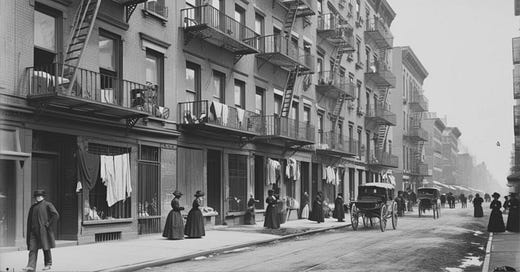



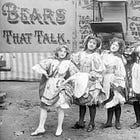

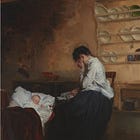

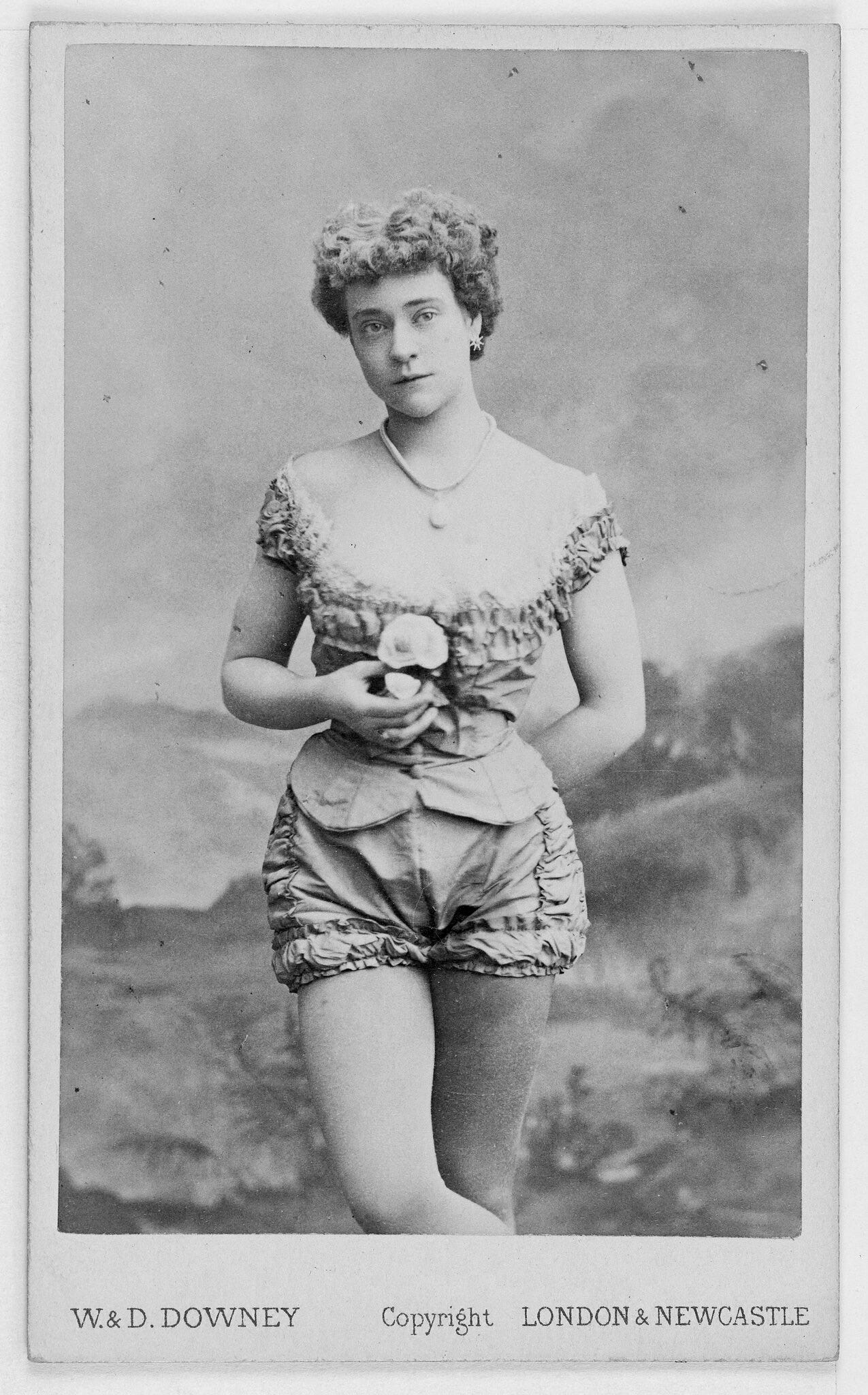


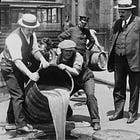
What an amazing life. I can't even imagine it. And 31 children? Blanche truly was a strong and determined woman to have survived so much over her life.
Wow, what a story. Do you think all 33 were her natural children? I am wondering if perhaps circus people adopted kids from other performers. I imagine a household that was quite fluid. Although you write that Blanche could produce birth certificates for all of them. Perhaps she was simply named as a parent? This is a fascinating story, and leaves us asking so many questions. The cemetery in Woodside Queens has many notable people buried there, including the man who wrote "The Sidewalks of New York."